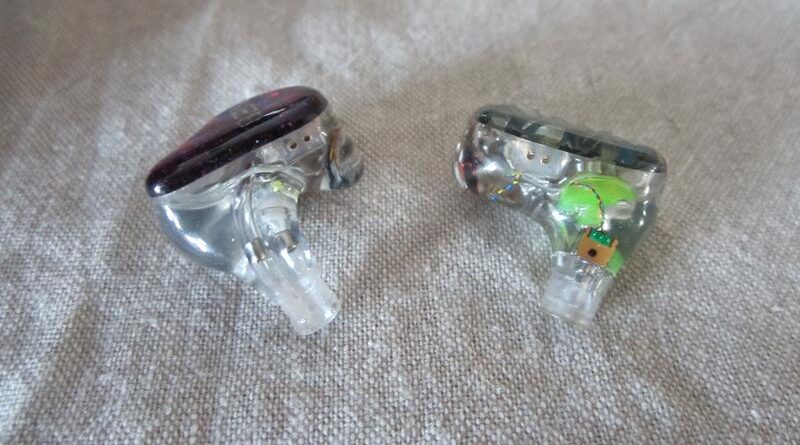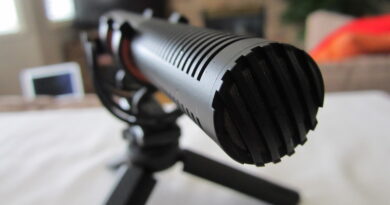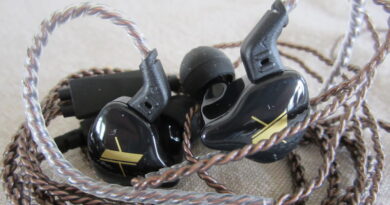Vision Ears Elysium and Vision Ears VE8 Review (2) – German Magic
Introduction
These brief notes are to complement Jürgen’s earlier review of the Vision Ears Elysium and VE8, with which I mostly concur. As with Jürgen’s review, my impressions are mainly comparisons between the two models because I’ve heard nothing else near their price range to compare them with. All listening was with with stock cables and (med) tips (which are Spinfit tips CP145s) and Audioquest DragonFly Black or Ifi iDSD Nano BL (‘Direct’ output unless noted) – perhaps rather ‘lo-fi’ sources for such expensive earphones.
Tonality and Timbre
VE8 bass is good – strong, extended. Nice timbre for a BA; still more ‘tight’ than ‘fast’, but similar to how I like it on a good ‘fast’ DD (JVC HA-FX1). Maybe too strong, kick drum & bass can come across as further forward on the stage than everything else but the vocalist. On the Elysium, mid to low bass (guitar) is strong, low to sub bass (kick drum) less so than VE8, ie less bass extension, but again it’s of excellent quality.
In contrast to some commentators, I thought bass guitar has better texture (reverb on decays) than on the VE8, maybe because it isn’t overwhelmed by the sub-bass. But, what would be nicer still is if the VE8 sub-bass level was present here too (yes, I want to have my cake as well as eat it).
VE8 mids are slightly honky – not good with vocals with nasal or honky signatures, and there’s noticeable emphasis on some horns and distorted guitars. They’re forward and can come across congested on some material.
By contrast, the mids on the Elysium are the star, further back in the mix while also being smooth and with fantastic timbre, not a trace of nasality or honk even with challenging vocals. Liquid, organic, and well integrated. Piano & vocals, wow. This is the best midrange I’ve yet heard on an IEM.
Treble on the VE8 is extended but smooth, the best I’ve heard on a BA (for the price of these, it should be!). It nonetheless seems a bit blunted in cymbal attacks, possibly as a result of a tonality in which the lower treble area is a bit recessed.
The Elysium treble imparts a slightly odd timbre to cymbals (because of the electrostatic drivers?) but is nicely extended, probably more than my old ears can really appreciate. Compared to the VE8, a lower treble boost is evident, and I’d say more accurate, with the transition from upper mids into treble being better balanced. Timbre-wise the Elysium treble seems a touch fast in both attack & decay, but compared to the VE8 cymbal hits are more prominent (if not louder), and decays are longer.
Pressing the Elysiums further into my ears exaggerated the treble, in contrast to the usual IEM experience of exaggerating the bass. Individual listeners’ treble experience will likely depend on seal and insertion depth.
Technicalities
Imaging & separation: imaging is more precise on the Elysium, separation between instruments more defined on the VE8.
Macro & microdynamics: VE8 is slightly ahead here, but is maybe a bit unrealistic (overdone) in amplitude on the macro. Elysium does better gradations, rather than ‘on-off’, with dynamics in the mids, and better captures subtleties there.
Pitch resolution: In the mids especially, this is better on the Elysium – small pitch change subtleties are rendered better, with more gradation.
Source Considerations
While the Elysiums are happiest with a more powerful source, the VE8s are more typical multi-BAs in that they have a very slight hiss noticeable in silences from the DragonFly and from the Nano BL’s ‘Direct’ jack at playing volume. This is unfortunate, because the ‘iEMatch’ jack’s relatively high output impedance lowers upper mids & treble by up to 3.3 dB.
Source matching will be important with both of these earphones, because as both listening and frequency-response measurements show (see Jürgen’s review), neither has an exaggerated upper midrange – yet both have impedance vs frequency curves that will suppress upper mids and treble if the amplifier that’s driving them has an elevated output impedance.
On the graph below, the tan curve is my impedance measurement for the VE8 and the blue curve is that supplied by Vision Ears after we queried them as to why my measurement was so different from the 22 Ohm (@ 1 kHz) specification given on their website.
VE replied that the 22 Ohm spec was for a prototype version, and the correct number is 16.4 Ohms as on their blue curve. The other curves on this graph show the effects on the VE8’s frequency response using amplifiers of up to 5.5 Ohms output impedance (purple, lowest, curve).

The Elysium has an even more extreme impedance vs frequency curve, increasing exponentially from single digits in the treble to > 200 Ohms in the bass. This will interact with amps of higher output impedance to tilt the frequency response darker, with the greatest effect around 12-13 kHz.

Disclaimer
I too thank the tour organizers and VE for the opportunity to hear these two pairs. Also we thank Marcel from VE for providing his impedance measurements and discussion.
Our generic standard disclaimer.
You find an INDEX of our most relevant technical articles HERE.









